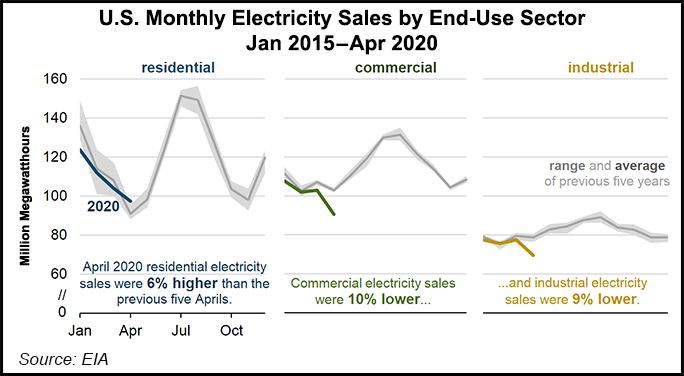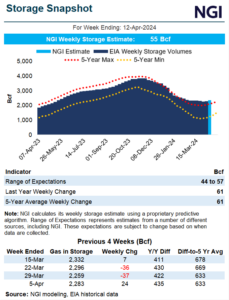Markets | NGI All News Access | NGI The Weekly Gas Market Report
Pandemic Pushing Electricity Use From Industrial, Commercial Sectors to Residential, Says EIA
Residential electricity sales in the United States surged to a record high in April, while cratering in the commercial and industrial sectors, a result of measures taken to reduce the spread of Covid-19, according to the Energy Information Administration (EIA).

Total electricity sales in the United States declined 4% in April compared with the same period in 2019, according to EIA data.
Residential electricity sales increased 8% in April 2020 compared with April 2019, while commercial sales decreased 11% and industrial sales decreased 9%.
“U.S. residential electricity sales have never been this high in April,” EIA said. “Commercial electricity sales in April were the lowest April value since April 2003, and industrial sales were the lowest since April 1987. …
“The residential sector is relatively sensitive to temperature changes. Based on the previous five Aprils, EIA estimates that the U.S. residential sector would have used about 3.1 million MWh/d in April 2020. Actual residential electricity demand in April 2020 was 3.3 million MWh/day, or about 6% higher than the typical April value.”
EIA has forecast U.S. electricity demand between June and August to total 998 billion kilowatt hours (kWh), a 5% decline compared with the same period last year and the lowest level of summer electricity consumption the country has experienced since 2019. Most of that decline will come through the commercial and industrial sectors, EIA said.
The agency also expects natural gas-fired power plants will generate an estimated 467 billion kWh this summer, slightly higher than last summer.
PJM Interconnection, the largest U.S. electric grid operator, said recently it is prepared for peak demand this summer, and the New York grid operator also sees adequate generation for the hot months ahead.
The Electricity Reliability Council of Texas (ERCOT), which is forecasting record power use this summer, warned that it may need to declare some Energy Emergency Alerts.
© 2024 Natural Gas Intelligence. All rights reserved.
ISSN © 1532-1231 | ISSN © 2577-9877 | ISSN © 1532-1266 |


